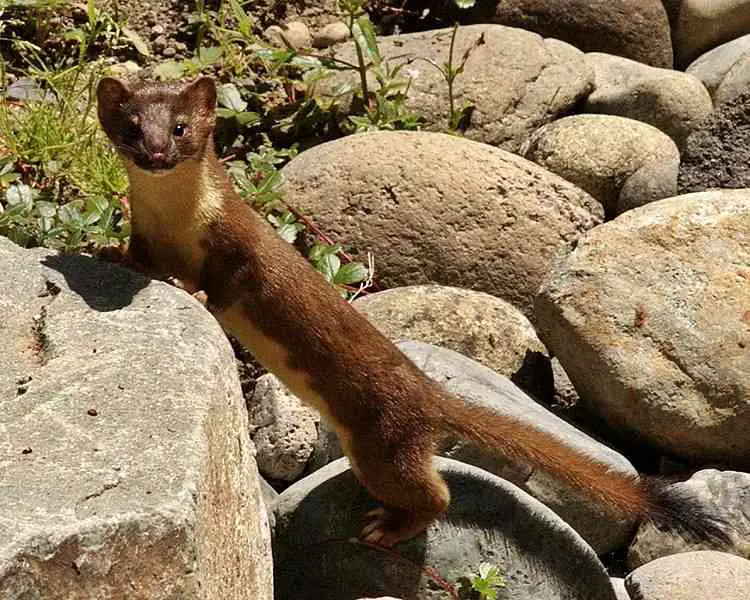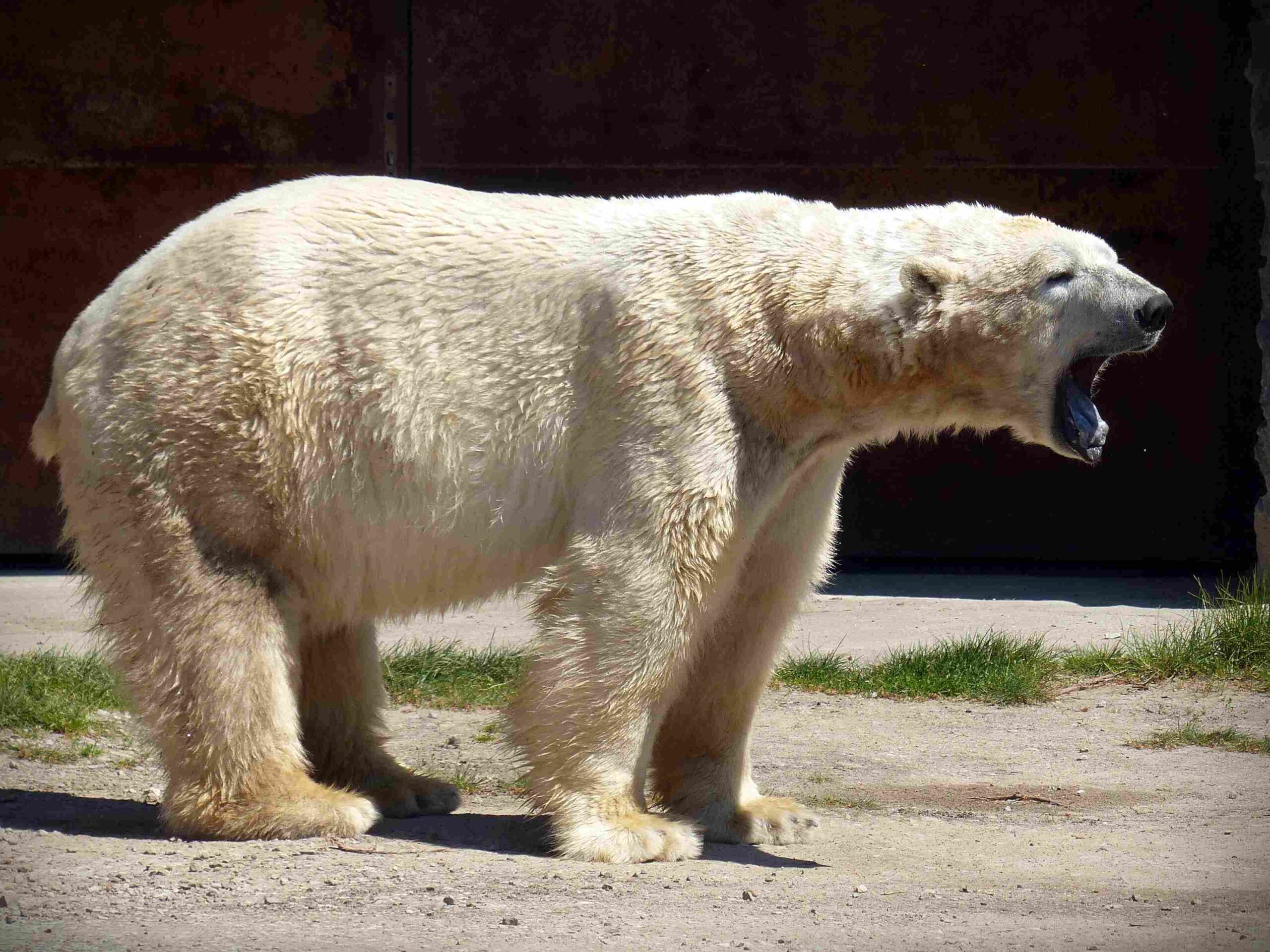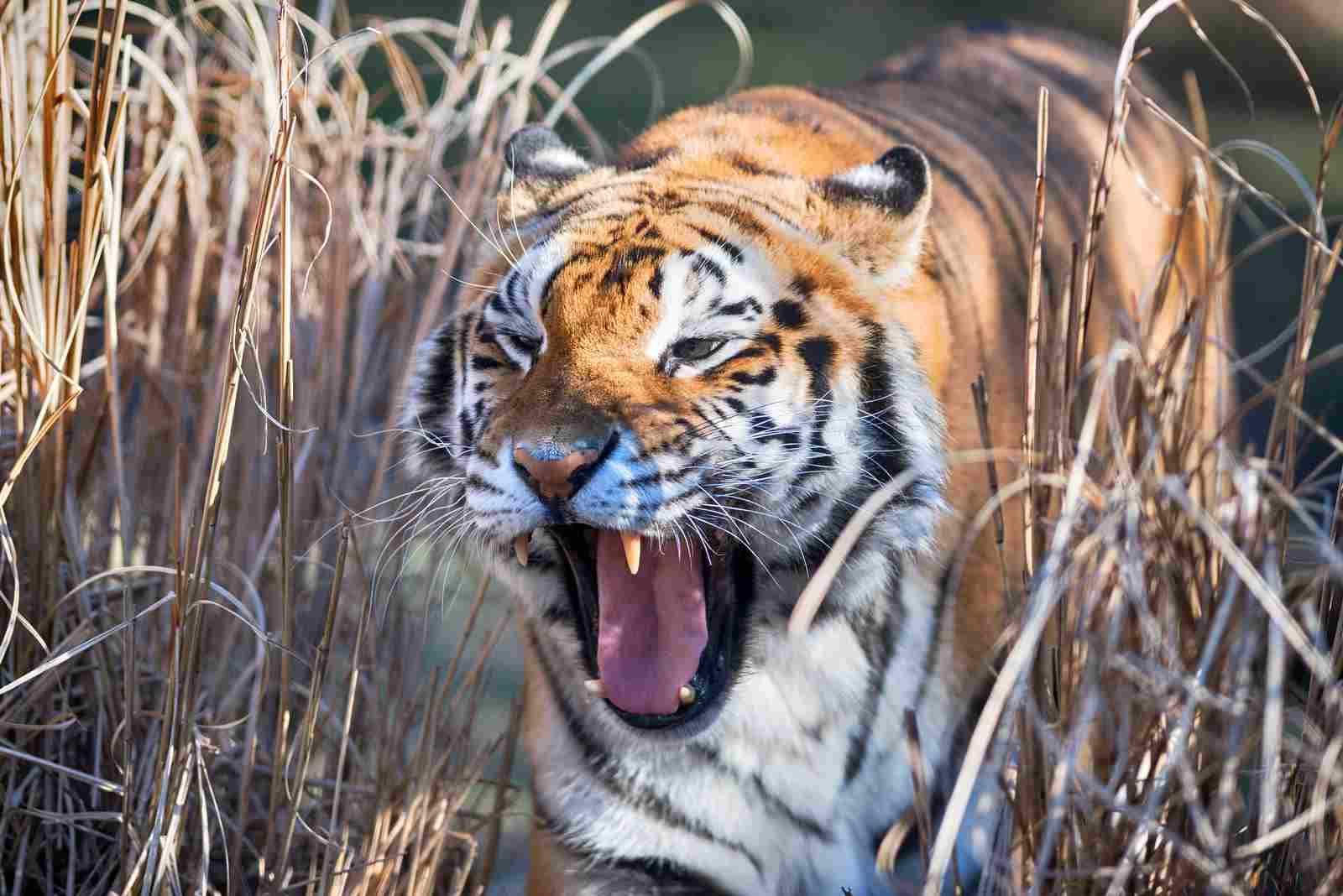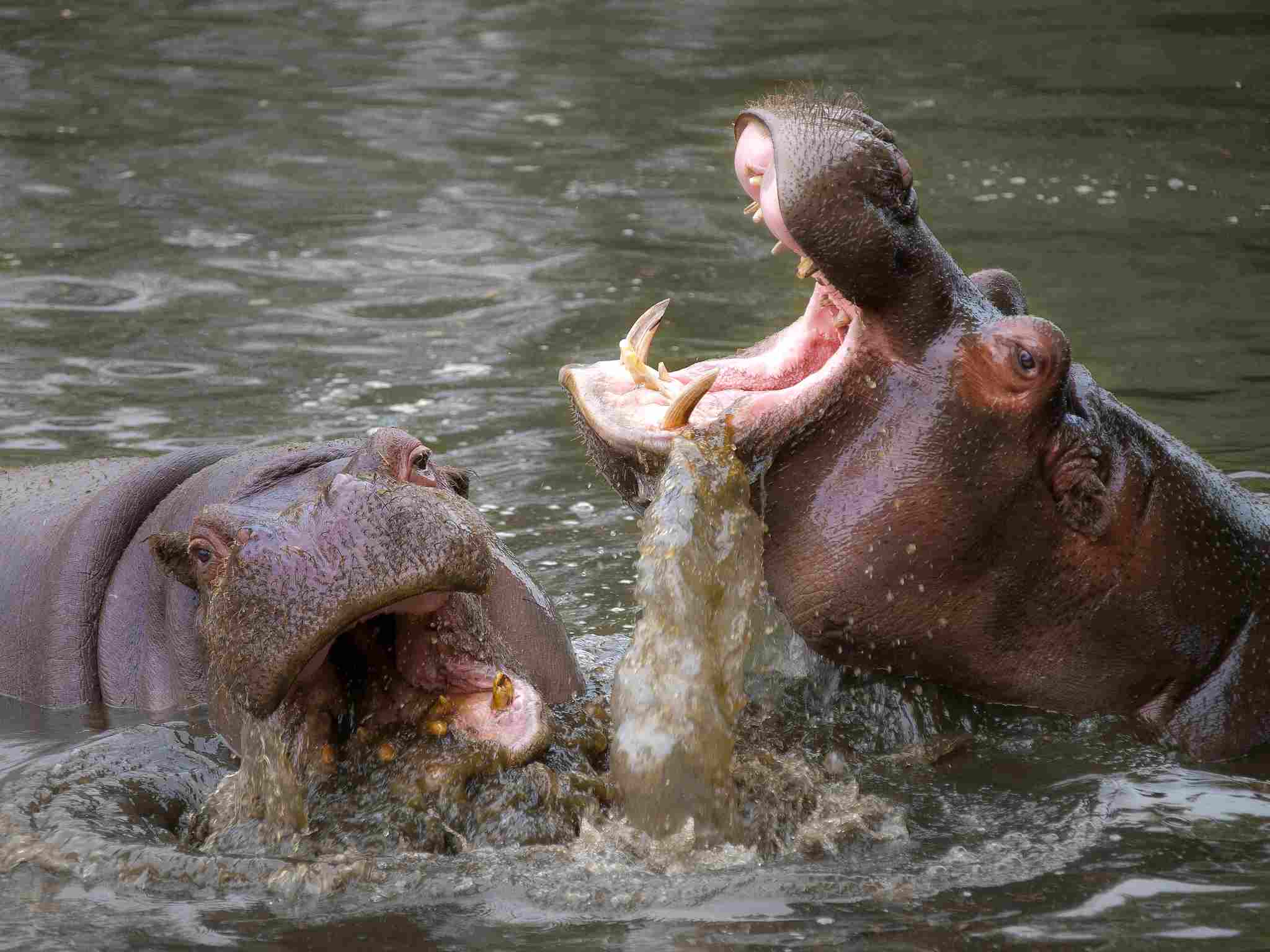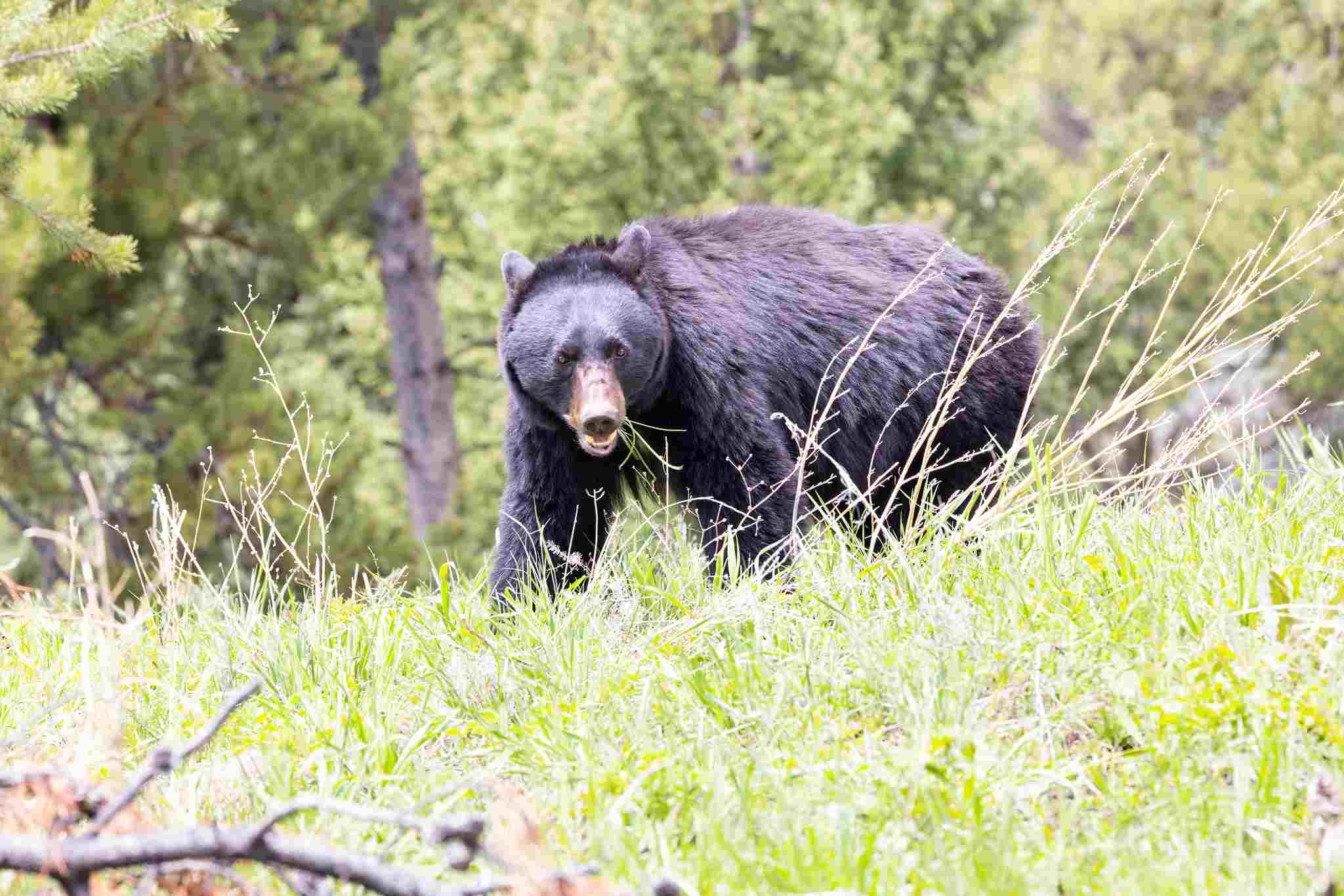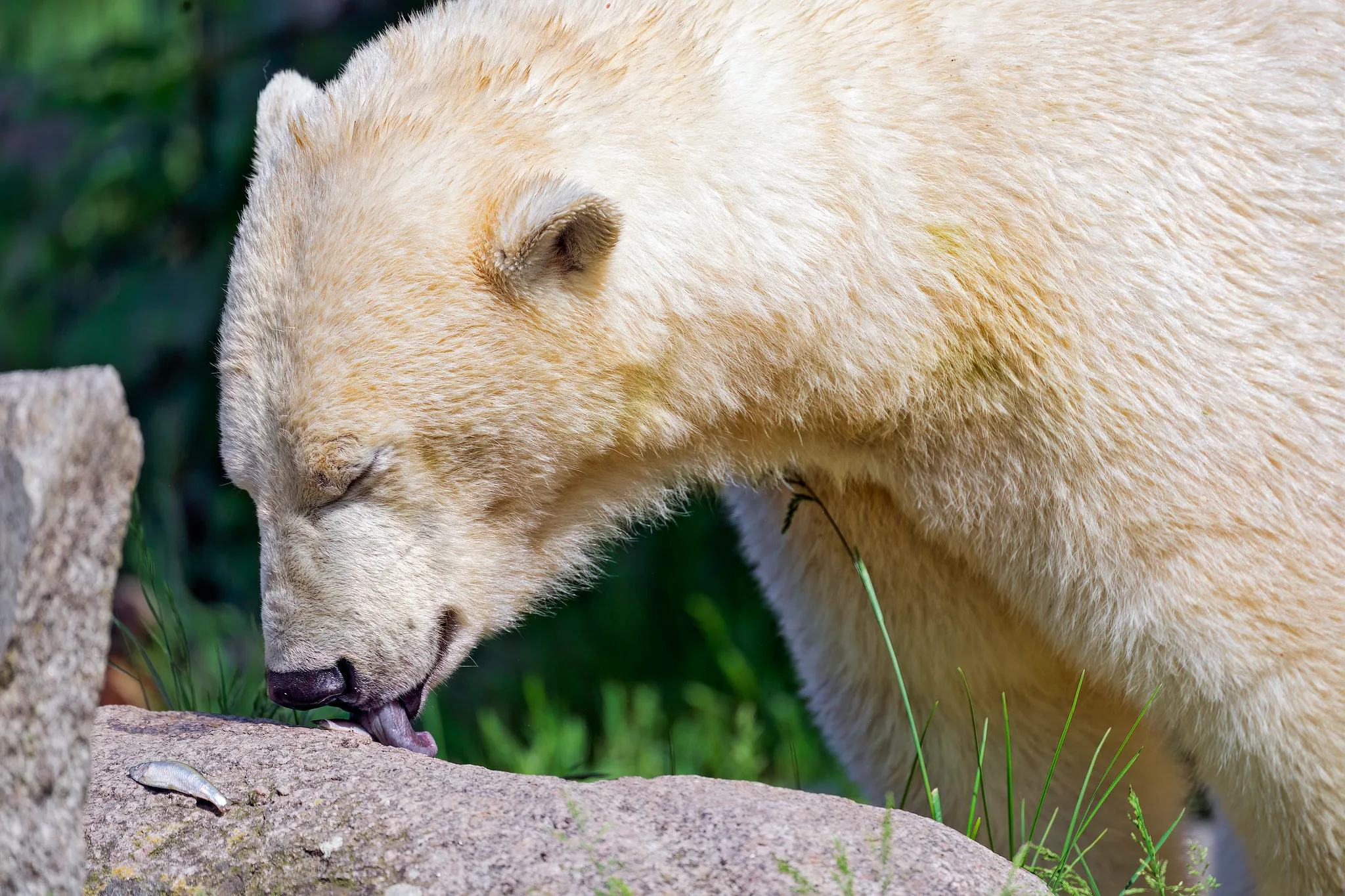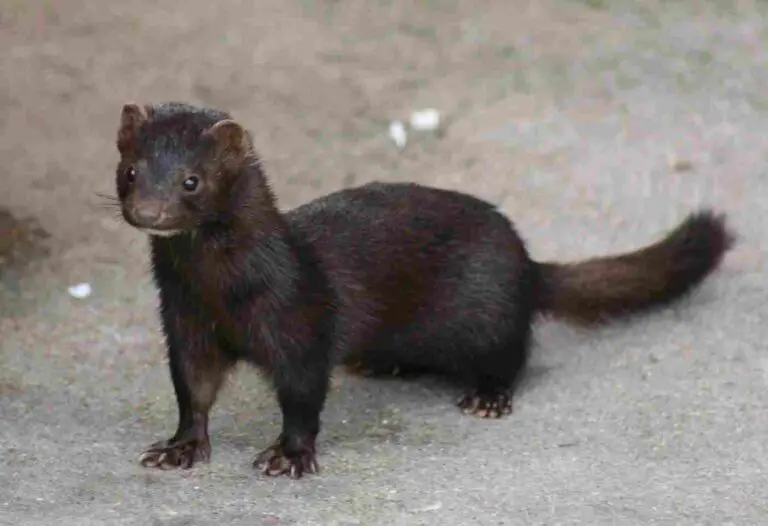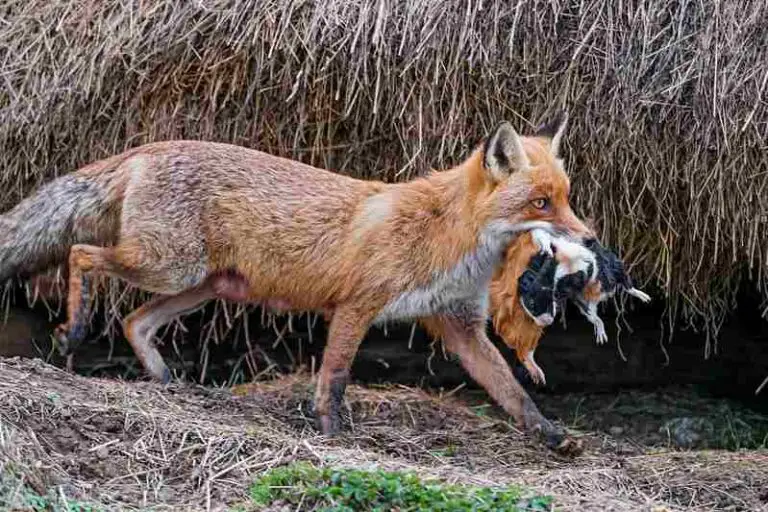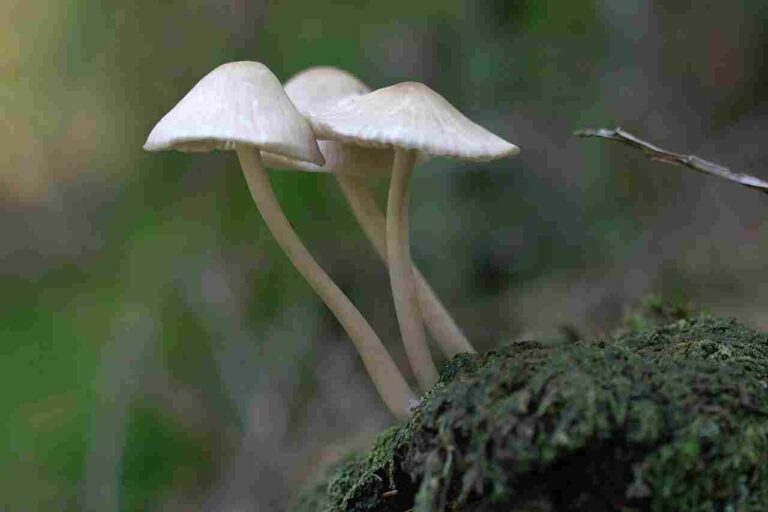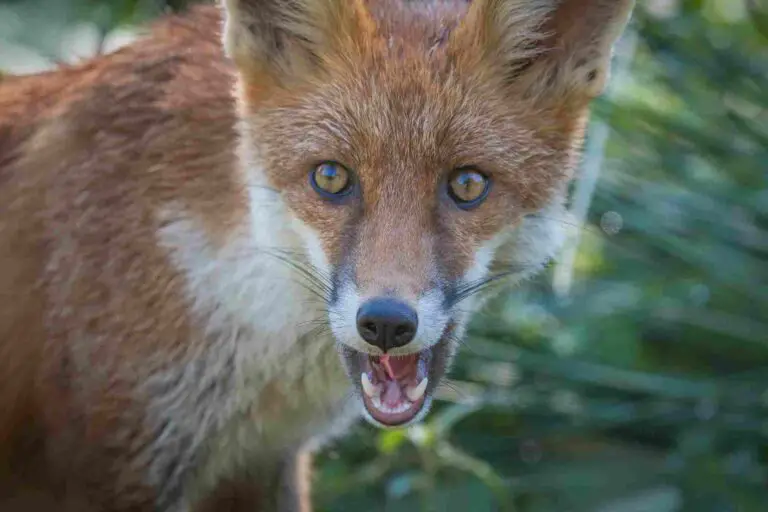32 Animals of the Tundra Habitat and Their Characteristics Discussed
Animals of the tundra are; herbivorous mammals like lemming; carnivores like Arctic fox and wolverine; omnivores like polar bears; insects like Antarctic midge, birds like snowy owl; fish like grayling; crustaceans like shrimp; and aquatic mammals like ringed seal.
This article discusses animals of the tundra, as outlined below;
-Small Herbivorous Mammals in the Tundra
-Large Herbivorous Mammals in the Tundra
-Small Carnivorous Mammals in the Tundra
-Large Carnivorous Mammals in the Tundra
-Omnivorous Mammals in the Tundra
-Insects in the Tundra Habitat
1). Small Herbivorous Mammals in the Tundra (as a group of Animals of the Tundra Habitat)
Herbivores represent an important group of animals in the tundra.
Their food sources are dominantly plant-based, so that they depend directly on tundra plants for energy and nutrients.
In both tundra food chains and food webs, herbivores occupy the second trophic level as primary consumers. They are essential in their role in sustaining the energy-transfer sequence from plants to non-herbivorous animals; to whom they serve as prey [4].
Herbivores in the tundra are a fairly diverse group, that consists of insects, mammals, birds, and other invertebrates (asides insects). However, compared to more-resourceful ecosystems like tropical rainforests.
Based on size, tundra herbivorous mammals can be distinguished into small (and medium) and large groups.
These small herbivorous mammals have distinctive adaptations that enable them survive the harsh tundra climate, while eluding predators and acquiring food and nutrients
Examples of small herbivorous, mammalian mammals are the Arctic hare (Lepus arcticus) and lemming (Lemmus spp.)
*Arctic Hare
Scientific Name: Lepus arcticus
Arctic hare is a herbivorous rodent that thrives fairly well in the tundra.
Its adaptive features include a thick, furry white coat in winter, that provides camouflage and conceals them from predators in snow-covered terrain [9].
This same coat turns brown in summer, yet serving as a camouflaging feature to conceal them among vegetation.

Other adaptive features of the Arctic hare in the tundra include its powerful hind legs for rapid navigation (in leaps) away from potential threats.
Food for Arctic hares comprises of vascular and non-vascular plant materials, including mosses and grasses.
*Lemming
Scientific Name: Lemmus spp.
The lemming is a small rodent whose physiological features include short legs, a short tail, and a compact body.
As herbivores, lemmings can feed on various plant materials including berries, mosses, grasses and sedges.
The lemming population in tundra regions varies according to a cyclic, seasonal pattern that is driven by breeding and migration [5].
Adaptive features (physiological and behavioral) of the lemming include;
1. Burrowing ability
2. Specialized digestive tract and dentition for herbivorous feeding
3. Thick fur for thermal insulation
Lemmings contribute to the natural recycling of nutrients in tundras, by consuming plants, as well as serving as a food source for predators in higher trophic levels of the food chain.
Collared lemming (Dicrostonyx torquatus) is a specie of lemming that can be found in tundra ecoregions.
Its food includes mosses, sedges and grasses, and it finds shelter from the elements, and predators, in underground burrows.
*Arctic Ground Squirrel
Scientific Name: Urocitellus parryii
The Arctic ground squirrel is a herbivorous rodent that occurs in the tundra biome.
Physiological features of this animal include short limbs, a bushy tail, and an overall compact build.
Like lemmings, Arctic ground squirrels are capable of digging burrows, which serve as winter shelters for their hibernation.
Food for the Arctic ground squirrel consists of berries, seeds, grasses and shrub-foliage.
Another distinctive feature of Arctic ground squirrels is cheek pouches; which they use when gathering food materials [7].
2). Large Herbivorous Mammals in the Tundra
Large herbivorous mammals also occur in the tundra.
These organisms are important to the biotic and abiotic dynamics of their environment, through their activities that affect the distribution, adaptation and speciation of tundra plants, as well as the landform-characteristics of the tundra.
Large herbivorous mammals in the tundra include species that have undergone multiple cycles of evolutionary adaptation, making them able to survive the occasional drought, bitter cold, high winds, and relative-scarcity of food in most tundras.
Examples of large herbivorous, mammalian animals of the tundra biome are; snow sheep, muskox, moose, and caribou.
*Snow Sheep
Scientific Name: Ovis nivicola
The snow sheep, or Siberian bighorn sheep; is a herbivorous mammal found mostly in the mountainous alpine tundra ranges.
Their features include prominent curved horns in male individuals [2], a robust, broad build, as well as a thick woolly coat whose color changes seasonally.
The hooves of snow sheep are designed to maximize friction with rock surfaces, thereby providing firm footing for the animal on sloping terrain.
Snow sheep are grazers that feed on shrubs, lichens and mosses among other vegetative materials.

*Muskox
Scientific Name: Ovibos moschatus
The muskox is another large mammalian herbivore found in tundras.
Muskoxen are characterized by a shaggy, thick coat for thermal insulation, and a sturdy build.
A behavioral adaptation of muskoxen for survival is the formation of closely-spaced, wall-like herds that reduce the effectiveness of predator attacks.
They may form such walls to surround young and vulnerable individuals, while making use of their horns to fend-off predators.
Food for muskoxen in the tundra comprises of lichens, sedges and grasses, among other plant materials.
*Moose
Scientific Name: Alces alces
The moose represents the largest specie of deer on Earth, and is well-represented in tundras around the world.
Features of this herbivore include long limbs, broad, palmate antlers, and a generally-massive build.
Willow shrubs, grasses and aquatic plants are all food sources for the moose.
Moose are also known to have solitary living patterns, and a physiological feature known as bell or dewlap, that occurs in the form of a skin flap under the throat, believed to be for thermoregulation of the organism.
*Caribou/Reindeer
Scientific Name: Rangifer tarandus
The caribou of reindeer, is a large herbivore that is well-adapted to the tundra.
Its features include a thick coat for cold-protection, and large antlers that are particularly prominent in male individuals.
Caribou is known for its migratory behavior [8], which enables it to survive under food-deficient conditions.
Food for the caribou is made up of plant materials like shrubs, mosses, lichens and grasses.
Like the snow sheep, caribou has friction-maximizing hooves that it uses for efficient navigation through rocky, sloping terrain even in snow.
The caribou shares some resemblance with moose, which represents its close biological relative.
3). Small Carnivorous Mammals in the Tundra (as a group of Animals of the Tundra Habitat)
As the title implies; small carnivorous mammals in the tundra include all animals that can prey on other animals for survival, and which fall behind other predators in terms of size.
It must be noted early that many of the small carnivores in the tundra do exhibit omnivorous tendencies by feeding on plant materials occasionally, as a supplement to their primary carnivorous diet.
Small carnivorous mammals in the tundra, survive by reason of their adaptive features, which are designed to enable them thrive under food supply-constraints, brief growing seasons, and low temperature-conditions.
Examples of small carnivorous mammals in the tundra are; weasel and Arctic fox.
*Weasel
Scientific Name: Mustela nivalis
The weasel is a small carnivorous mammal that is geographically versatile and ecologically-resilient; so that it may be found in multiple biomes, which include tundras.
Weasels typically have short limbs, an extended neck, and an elongate, slender body.
Their fur coloration is generally lighter around the belly, and most individuals have winter coat-camouflage.
The small size and agility of weasels are advantageous characteristics which they use to capture their prey, which consist of insects, birds, and other small mammals.

The stoat or ermine (Mustela erminea) is a type of weasel in the tundra, whose brown summer coat turns white during the winter season, through an adaptive mechanism for camouflage.
Ermines are known to have a particularly high rate of metabolism, and feed on birds, bird-eggs, and small mammals.
*Arctic Fox
Scientific Name: Vulpes lagopus
The Arctic fox is a relatively-popular inhabitant of tundra regions.
Physiological features of this animal include blue-gray or white, thick fur which provides camouflage in the snowy terrain in winter, and changes color (by moulting) to gray-brown in the summer season [15].
Feeding habits of the Arctic fox are highly opportunistic, so that it is capable of feeding omnivorously on berries, as well as scavenging on carrion.
Its primary diet however comprises of prey like voles, birds and lemmings.
The physiological features of Arctic foxes as well as their behaviors, are central to their success as tundra inhabitants.
Adaptations of small carnivorous mammals in the tundra include;
1. Thick insulating fur
2. Hunting skill
3. Stealth
4. Drought tolerance
5. Opportunistic feeding
6. Camouflage
4). Large Carnivorous Mammals in the Tundra
The large carnivorous mammals which occur in tundra eco-regions, mostly function as tertiary consumers/apex predators within their territory.
These animals survive the challenging and harsh tundra conditions by means of adaptations that enable them tolerate food supply limitations, treeless landscapes, and extremely low temperatures.
The adaptive features of large carnivores in the tundra include various physiological and behavioral attributes.
Examples of large carnivores in the tundra biome are; gray wolf (Canis lupus), wolverine (Gulo gulo) and polar bear (Ursus maritimus).
*Gray Wolf
Scientific Name: Canis lupus
The gray wolf is a carnivorous mammal that is highly-adaptable and which occurs in diverse environments including tundras.
Gray wolves are known to be highly-social animals, that live and hunt in packs.
They have thick furry coats that provide thermal insulation from the cold, and they are skilled hunters whose food sources include muskoxen, caribous, and Arctic hares.
Gray wolves posses dental and respiratory-tract adaptations that make them effective as carnivores.

*Wolverine
Scientific Name: Gulo gulo
The wolverine can be described as a medium-sized carnivore.
It is very resilient and versatile, occurring in harsh environments like the tundra.
Features of the wolverine include a furry, thick coat that provides protection from cold, as well as strong jaws, prominent canines and claws.
The wolverine is powerful for its size, and is capable of successfully taking down large prey.
Food for this mammal primarily consists of rodents like hares, voles and lemmings. They may also scavenge on carrion and remnants of other carnivores' kills.
*Polar Bear
Scientific Name: Ursus maritimus
The polar bear of the largest terrestrial predator on Earth [13], and dominates its territory within the Arctic tundra, as an apex predator.
Polar bears are equipped with an insulating, subcutaneous layer and thick fur. They are also able to swim and hunt for prey in marine micro-habitats within the tundra.
Food for the polar bear consists of fish, seals, and carrion. They also exhibit occasional omnivorous behavior.

In general, the adaptations of large carnivores in the tundra include;
1. Specialized digestive tract
2. Thick fur
3. Insulating subcutaneous layer
4. Dietary versatility
5. Social behavior
6. Hunting skill
7. Prominent canines and claws
Large carnivores contribute to the cycling of nutrients in the tundra through their feeding activities, and help regulate the population-size of prey organisms.
5). Omnivorous Mammals in the Tundra (as a group of Animals of the Tundra Habitat)
Omnivorous mammals in the tundra are opportunistic, adaptable feeders that have evolved to consume a broad range of food sources that include both plant and animal matter.
It can be argued that these organisms are the products of major food supply-constraints in their habitat(s), which forced them to adopt various organic resources as food. Many of these omnivores have physiological characteristics that help them function in their dietary role.
All omnivores in the tundra have a primary feeding preference or habit, which could be herbivorous or omnivorous. Examples of these tundra omnivores are; red fox (Vulpes vulpes), American marten (Martes americana), Arctic ground squirrel (Urocitellus parryii), and brown bear (Ursus arctos).
*Red Fox
Scientific Name: Vulpes vulpes
The red fox can be described as a medium-sized canid with primarily-carnivorous habits, that can survive in various habitats (including the tundra) by being highly adaptive, to the extent of feeding omnivorously.
The diet of red foxes is very diverse; and comprises of birds, bird-eggs, fruits, carrion, berries, insects, and small mammals [10].
They can function as both scavengers and skilled hunters, and capture prey by means of agility and keen-sensitivity.

*American Marten
Scientific Name: Martes americana
American marten is a small mammal whose feeding habits are omnivorous, although it is primarily carnivorous in its dietary preferences.
Martens occur in forests and tundras within North America.
Features of the American marten include; fur coat for insulation, a slender build, hunting skill, agility, and climbing-ability.
The diet of this animal comprises of birds, bird-eggs, mushrooms, berries, fruits, and other small mammals.
Rodents like voles and squirrels are particularly likely to fall prey, to the American marten.
*Arctic Ground Squirrel
Scientific Name: Urocitellus parryii
Arctic ground squirrel is a rodent that can be found in North American tundra regions.
Features of Arctic ground squirrels include thick fur and a compact body.
While this rodent is primarily a herbivore (as shown in section 1 of this article), it is also opportunistic, and can consume bird-eggs and insects, among other forms of animal matter. This supplements its primary diet of leaves, grasses, berries; roots and sedges; especially in periods of food-resource depletion.
*Brown Bear
Scientific Name: Ursus arctos
The brown bear (referred to in North America as the 'grizzly bear') is a large mammal that is found in various habitats including the tundra.
It is opportunistic and omnivorous; and its physiological features include; a shaggy, hairy coat for insulation, and a robust build.
The diet of brown bears is seasonally variable [12]; and consists of nuts, grasses, roots, pine cones, acorns, mushrooms, berries, insects, fish, carrion, and small mammals. Brown bears are particularly skilled at fishing.
Omnivores are a particularly unique group of organisms for their ability to adapt to diverse food sources.
Adaptations of omnivorous animals in the tundra include;
1. Highly-specialized digestive system
2. Instantaneously-adaptable feeding strategy
3. Flexible behavioral tendencies in response to ecological changes
6). Insects in the Tundra Habitat
Insects are important as biotic components of the tundra.
They play crucial roles in energy transfer, biodegradation, and pollination; and are a source of food to several organisms in higher trophic levels.
Insects that occur in the tundra are those which have adapted to the harsh conditions. They include; Arctic skipper butterfly (Carterocephalus palaemon), Arctic woolly bear moth (Gynaephora groenlandica), snow flea (Hypogastrura nivicola), and Antarctic midge (Belgica antarctica).
*Arctic Skipper Butterfly
Scientific Name: Carterocephalus palaemon
Arctic skipper butterfly is a small specie of butterfly that occurs in Eurasian and North American tundras.
Features of this insect include brownish coloration that provides camouflage among vegetation.
Arctic skipper butterflies feed primarily on nectar from angiosperms like saxifrage and Arctic poppy.
*Arctic Woolly Bear Moth
Scientific Name: Gynaephora groenlandica
Arctic woolly bear moth is a moth specie that survives in the tundra by means of its adaptations.
The caterpillar stage of this insect is covered densely in bristles that serve as a layer of insulation from the cold environment.
In the brief summer, the moth stage is active, feeding on tundra plants like sedges and willows.

*Snow Flea
Scientific Name: Hypogastrura nivicola
The snow flea (or 'springtail') is a wingless, tiny insect that survives in cold biomes like the tundra.
Dark coloration enables the snow flea to act as a black-body, by effectively absorbing thermal energy within its surroundings. This prevents it from dying as a result of cold.
Snow fleas are detrivores, meaning that they feed on organic remains and facilitate biodegradation. This enables them contribute to nutrient-cycling.
*Antarctic Midge
Scientific Name: Belgica antarctica
The Antarctic midge; which is sometimes called the Arctic midge; is a small specie of fly that is among the only insects to occur in polar regions, such as the tundra.
Antarctic midges are important in diverse ways, to the tundra ecosystem.
In their larva stage, they are mostly aquatic or hydrophilic [1], and live in freshwater lakes and ponds within the tundra; feeding on detrital biomass and algae.
In adulthood, the Antarctic midge is relevant as a source of food for insectivorous mammals and birds; as well as a pollinator for flowering plants.
The two main adaptations of insects in the tundra, for their survival, are;
1. Seasonally-driven lifecycle
2. Cold-tolerant physiology
7). Birds in the Tundra (as a group of Animals of the Tundra Habitat)
Birds that survive in the tundra, do so by means of distinctive behavioral and physiological adaptations; which help them tolerate the harsh environmental conditions.
Examples of birds in the tundra biome are; Arctic tern (Sterna paradisaea), lapland longspur (Calcarius lapponicus), snowy owl (Bubo scandiacus), and rock ptarmigan (Lagopus muta).
*Arctic Tern
Scientific Name: Sterna paradisaea
Arctic tern is a bird with migratory behavior, that often breeds in the tundra.
Its features include a red beak, white-and-gray plumage, and a forked tail.
The Arctic tern is particularly distinctive for its long migratory travels [11], which may cover several thousand kilometers per annum.
Food for this bird comprises mostly of invertebrates and fish.

*Lapland Longspur
Scientific Name: Calcarius lapponicus
Lapland longspur is a songbird that is relatively-small in size, and breeds in tundras during summer, every year, while migrating southward during the winter.
Its features include a white and black head, and a brown, streaked plumage.
Lapland longspur consumes insects and seeds, among other food sources.
*Snowy Owl
Scientific Name: Bubo scandiacus
Snowy owl is a distinctive bird of prey that is fairly-well represented in tundras.
Is plumage is usually white, serving as camouflage in snowy terrain during winter.
As raptors, these birds have keen optical and auditory sensitivity, and prey on small mammals like lemmings.
*Rock Ptarmigan
Scientific Name: Lagopus muta
Rock ptarmigan is a bird that is herbivorous, medium-sized, and well-adapted to harsh, frigid environments.
The plumage of this bird is white and brown-mottled in summer, and becomes entirely white in winter [14], thereby serving as camouflage against the snowy backdrop.
Feathers cover the feet of rock ptarmigans, serving as an insulating medium.
Food sources for this bird include; twigs, seeds, leaves, and buds.
Asides the individuals discussed here, other birds can be found in the tundra, including; rough-legged hawk, waterfowl, and gyrfalcon.
General adaptations of birds in the tundra for their survival include;
1. Plumage camouflage
2. Migratory behavior
3. Cold tolerance and dense feather-insulation
Ecological roles of birds in the tundra are;
1. Prey population-control
2. Ecosystem health-indication
3. Seed dispersal
8). Fish in the Tundra
Although the tundra is primarily a terrestrial biome; it contains both freshwater and marine ecosystems that serve as micro-habitats or segments of transitional ecotones.
Aquatic organisms in these water bodies include fish, which are important as biotic components of the tundra.
Species of fish that survive in tundra zones are those with cold-tolerant attributes, such as northern pike (Esox lucius), Arctic char (Salvelinus alpinus), Arctic grayling (Thymallus arcticus), and lake trout (Salvelinus namaycush).
*Northern Pike
Scientific Name: Esox lucius
Northern pike is a large fish with carnivorous feeding habits, that occurs in freshwater bodies within tundra regions.
Its features include a distinctively-shaped snout, sharp teeth, and an elongate, slender body.
Due to their cold-tolerance, northern pike are found across a broad geographic range in the polar region.
They are voracious and aggressive carnivores that prey on other fish, invertebrates as well as small mammals and amphibians that may occur in the aquatic environment.

*Arctic Char
Scientific Name: Salvelinus alpinus
Arctic char is a cold-tolerant, freshwater fish that inhabits water bodies in polar zones like the tundra.
Features of this organism include a forked tail, varied coloration (silver, red, olive-green) and a streamlined body.
In addition to their cold tolerance, Arctic char are able to tolerate near-anoxic conditions; which are not uncommon in cold waters due to occasional slow-flow and inactive oxygen-cycling.
Food for the Arctic char comprises of small fish, crustaceans and insects.
*Arctic Grayling
Scientific Name: Thymallus arcticus
The Arctic grayling is a unique specie of fish that inhabits freshwater bodies in the tundra.
Features of this fish include a prominent dorsal fin, slender body, and bright distinctive coloration.
The diet of Arctic graylings comprises of plant matter, insects and small fish.
They have the unique behavior of leaping out of the water to catch insects flying above the surface.

*Lake Trout
Scientific Name: Salvelinus namaycush
Lake trout is a freshwater fish specie that occurs mostly in deep, frigid polar lakes (some of which are found in tundra regions).
Its physiological attributes include; variable coloration (spotted gray-blue, dark green), and a deeply-forked tail.
The lake trout is cold-tolerant and capable of thriving in low-oxygen water columns.
Their feeding behavior is predominantly carnivorous, with food sources including; insects, crustaceans and smaller fish.
Generally, the adaptations of fish in the tundra include;
1. Specialized respiratory system (for anoxic water survival)
2. Cold-tolerance (due to possession of anti-freeze proteins)
3. Highly-evolved feeding habits and strategies
9). Crustaceans in the Tundra (as a group of Animals of the Tundra Habitat)
Crustaceans in the tundra constitute a group of diverse, small aquatic arthropods that belong to the sub-Phylum Crustacea [6].
They mostly inhabit freshwater micro-habitats, and include Arctic amphipods, copepods, and shrimps.
*Arctic Amphipods
Scientific Name: Gammarus spp.
Arctic amphipods are small aquatic arthropods that are well-represented in freshwater systems within the tundra.
Features of these crustaceans include segmented limbs, and a generally-curved morphology.
Arctic amphipod feeds omnivorously and detrivorously, consuming algae, small invertebrates, and decomposing organic debris.
Their feeding activities contribute to biodegradation and nutrient-cycling within their environment.
*Copepods
Scientific Name: Copepoda
The copepods are a group of diverse crustaceans occurring across a wide geographic range, in diverse aquatic systems including the tundra.
Their features include antennae, multiple swimming appendages, and a streamlined morphology.
In terms of feeding habit, copepods are omnivorous, although they mostly consume phytoplankton.
*Arctic Shrimp
Scientific Name: Pandalus borealis
The Arctic shrimp, or pink shrimp, is a crustacean found in frigid waters like those in tundra regions.
This organism is characterized by having elongate antennae, distinctive pink coloration, and a slender morphology.
Like copepods, Arctic shrimps are omnivorous; and consume detritus, algae and phytoplankton.
In turn, they are consumed by many tundra aquatic-organisms such as fish.
Adaptations of crustaceans in the tundra include;
1. Cold tolerance
2. Swimming appendages
3. Flexible feeding habit
10). Aquatic Mammals in the Tundra Habitat
Aquatic mammals in the tundra include mammalian organisms that are either partly terrestrial (semi-aquatic) or fully-aquatic, and live in saltwater and freshwater habitats including summer wetlands, lakes, rivers, ponds, and estuarine tributaries.
In order to survive, these mammals have undergone series of evolutions that made them tolerant of the cold and drought-prone conditions.
Examples of aquatic mammals that can be found in the tundra are; bearded seal (Erignathus barbatus), polar bear (Ursus maritimus), beluga whale (Delphinapterus leucas), and ringed seal (Pusa hispida).
*Bearded Seal
Scientific Name: Erignathus barbatus
Bearded seal refers to a large specie of seal that lives in sub-Arctic and Arctic zones, which include the tundra biome.
The preferred habitat of this mammal is the polar coast, which is dominated by ocean water and ice.
Bearded seals derive their name from having distinctive, and extensive whiskers.
They have outstanding swimming abilities and can dive to significant depths in search of food.
Food for the bearded seal consists of crabs, shrimps; clams, whelks, mollusks, as well as fish.

*Polar Bear
Scientific Name: Ursus maritimus
Polar bear is a mostly-terrestrial predator that hunts and lives predominantly on land and ice-covered coasts.
However, it is so well-adapted to its habitat(s) that polar bears are known to swim efficiently and spend extended periods of time in frigid water.
In summer, they may also go further inland (from the coast) in search of food.
*Beluga Whale
Scientific Name: Delphinapterus leucas
The beluga whale (or white whale) is a relatively small whale/cetacean that occurs in subarctic and Arctic water bodies, which traverse the tundra.
Features of the beluga include a flexible neck, bulbous forehead, and streamlined body
Beluga whales are sociable animals and have distinctive vocalizations which they use to communicate [3].
Their food includes crustaceans, squid and fish.
*Ringed Seal
Scientific Name: Pusa hispida
Ringed seal is the most dominant specie of seal in subarctic and Arctic zones, as well as the most common in the tundra.
It is capable of thriving in both marine and freshwater zones, and is very well-adapted to frigid conditions.
Ringed seals have adaptive behaviors that enable them breed, feed, and elude predators like the polar bear.
Their food comprises mostly of invertebrates and fish.
General adaptations of aquatic mammals in the tundra are;
1. Insulating subcutaneous layer
2. Streamlined body
3. Oxygen and energy-conservation capabilities
4. Evolved flipper limbs for aquatic navigation
Activities of these mammals are essential toward determining the sustainability of the tundra as a whole.
Conclusion
Animals of the tundra habitat are grouped and listed in the following table;
S/N | Tundra Animal Category | Examples of Tundra Animals |
A. | Small Herbivorous Mammals | |
1. 2. 3. | *Arctic Hare *Lemming *Arctic Ground Squirrel | |
B. | Large Herbivorous Mammals | |
3. 4. 5. 6. | *Snow Sheep *Muskox *Moose *Caribou/Reindeer | |
C. | Small Carnivorous Mammals | |
7. 8. | *Weasel *Arctic Fox | |
D. | Large Carnivorous Mammals | |
9. 10. 11. | *Gray Wolf *Wolverine *Polar Bear | |
E. | Omnivorous Mammals | |
12. 13. 14. 15. | *Red Fox *American Marten *Arctic Ground Squirrel *Brown Bear | |
F | Insects | |
16. 16. 17. 18. | "Arctic Skipper Butterfly *Arctic Woolly Bear Moth *Snow Flea *Antarctic Midge | |
G. | Birds | |
19. 20. 21. 22. | *Arctic Tern *Lapland Longspur *Snowy Owl *Rock Ptarmigan | |
H. | Fish | |
23. 24. 25. 26. | *Northern Pike *Arctic Char *Arctic Grayling *Lake Trout | |
I. | Crustaceans | |
27. 28. 29. | *Arctic Amphipods *Copepods *Arctic Shrimp | |
J. | Aquatic Mammals | |
30. 31. 32. | *Polar Bear *Beluga Whale *Ringed Seal | |
References
1). Benoit, J. B.; Lopez-Martinez, G.; Michaud, M. R.; Elnitsky, M. A.; Lee, R. E. Jr.; Denlinger, D. L. (2007). "Mechanisms to reduce dehydration stress in larvae of the Antarctic midge, Belgica antarctica". J Insect Physiol. 2007 Jul;53(7):656-67. Available at: https://doi.org/10.1016/j.jinsphys.2007.04.006. (Accessed 15 June 2023).
2). Carlson, K. (2020). "Nature Brief Bighorn Sheep." Available at: https://www.researchgate.net/publication/344084657_Nature_Brief_Bighorn_Sheep. (Accessed 15 June 2023).
3). Chmelnitsky, E. G. (2010). "Beluga whale, Delphinapterus leucas, vocalizations and their relation to behaviour in the Churchill River, Manitoba, Canada." Available at: https://www.researchgate.net/publication/241429127_Beluga_whale_Delphinapterus_leucas_vocalizations_and_their_relation_to_behaviour_in_the_Churchill_River_Manitoba_Canada.(Accessed 15 June 2023).
4). Dickman, E. M.; Newell, J. M.; González, M. J.; Vanni, M. J. (2008). "Light, nutrients, and food-chain length constrain planktonic energy transfer efficiency across multiple trophic levels". Proc Natl Acad Sci U S A. 2008 Nov 25;105(47):18408-12. Available at: https://doi.org/10.1073/pnas.0805566105. (Accessed 15 June 2023).
5). Fauteux, D.; Gauthier, G.; Berteaux, D. (2015). "Seasonal demography of a cyclic lemming population in the Canadian Arctic." J Anim Ecol. 2015 Sep;84(5):1412-22. Available at: https://doi.org/10.1111/1365-2656.12385. (Accessed 15 June 2023).
6). Ghafor, I. M. (2020). "Crustacean." Crustacea. Available at: https://doi.org/10.5772/intechopen.89730. (Accessed 15 June 2023).
7). Gillis, E.; Morrison, S.; Zazula, G. D., Hik, D. S. (2005). "Evidence for selective caching by Arctic ground squirrels living in alpine meadows in the Yukon." Arctic 58(4):354-360. Available at: https://journalhosting.ucalgary.ca/index.php/arctic/article/view/63510. (Accessed 15 June 2023).
8). Joly, K.; Gunn, A.; D Côté, S.; Panzacchi, M.; Adamczewski, J.; Suitor, M. J.; Gurarie, E. (2021). "Caribou and reindeer migrations in the changing Arctic." Available at: 357289966_Caribou_and_reindeer_migrations_in_the_changing_Arctic. (Accessed 15 June 2023).
9). Jones, M. R.; Mills, L. S.; Jensen, J. D.; Good, J. M. (2020). "Convergent evolution of seasonal camouflage in response to reduced snow cover across the snowshoe hare range." Evolution. 2020 Sep;74(9):2033-2045. Available at: https://doi.org/10.1111/evo.13976. (Accessed 15 June 2023).
10). Lanszki, J.; Kurys, A.; Szabo, L.; Nagyapáti, N.; Porter, L. B.; Heltai, M. (2016). "Diet composition of the golden jackal and the sympatric red fox in an agricultural area (Hungary)." Folia Zoologica -Praha- 65(4):310-322. Available at: https://doi.org/10.25225/fozo.v65.i4.a3.2016. (Accessed 15 June 2023).
11). Mcknight, A.; Allyn, A. J.; Duffy, D. C.; Irons, D. B. (2013). "'Stepping stone' pattern in Pacific Arctic tern migration reveals the importance of upwelling areas." Marine Ecology Progress Series 491:253-264. Available at: https://doi.org/10.3354/meps10469. (Accessed 15 June 2023).
12). Stenset, N.E.; Lutnæs, P. N.; Bjarnadóttir, V.; Dahle, B.; Fossum, K. H.; Jigsved, P.; Johansen, T.; Neumann, W.; Opseth, O.; Rønning, O.; Steyaert, S. M. J. G.; Zedrosser, A.; Brunberg, S.; Swenson, J. E. (2016). "Seasonal and annual variation in the diet of brown bears (Ursus arctos) in the boreal forest of southcentral Sweden." Wildlife Biology 22(3). Available at: https://doi.org/10.2981/wlb.00194. (Accessed 15 June 2023).
13). Tseng, Z. J. (2021). "Polar bear diet in the face of Arctic climate change." Glob Chang Biol. 2021 Jul;27(13):3004-3005. Available at: https://doi.org/10.1111/gcb.15599. (Accessed 15 June 2023).
14). Zimova, M.; Hackländer, K.; Good, J. M.; Melo-Ferreira, J.; Alves, P. C.; Mills, L. S. (2018). "Function and underlying mechanisms of seasonal colour moulting in mammals and birds: what keeps them changing in a warming world?" Biol Rev Camb Philos Soc. 2018 Aug;93(3):1478-1498. Available at: https://doi.org/10.1111/brv.12405. (Accessed 15 June 2023).
15). Zimova, M.; Moberg, D.; Mills, L. S.; Dietz, A. J.; Angerbjörn, A. (2022). "Colour moult phenology and camouflage mismatch in polymorphic populations of Arctic foxes." Biol Lett. 2022 Nov;18(11):20220334. Available at: https://doi.org/10.1098/rsbl.2022.0334. (Accessed 15 June 2023).
